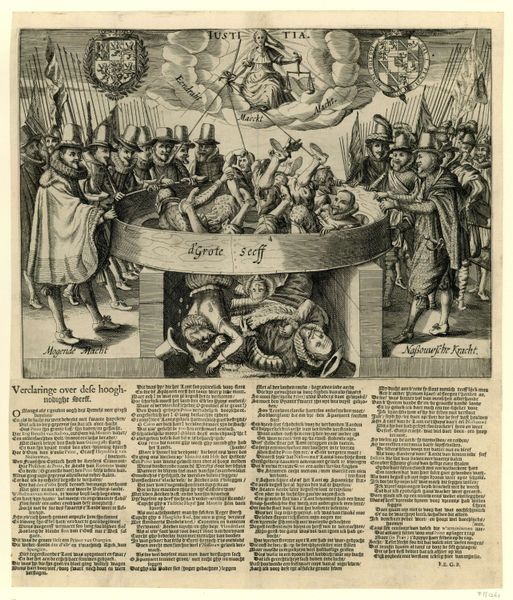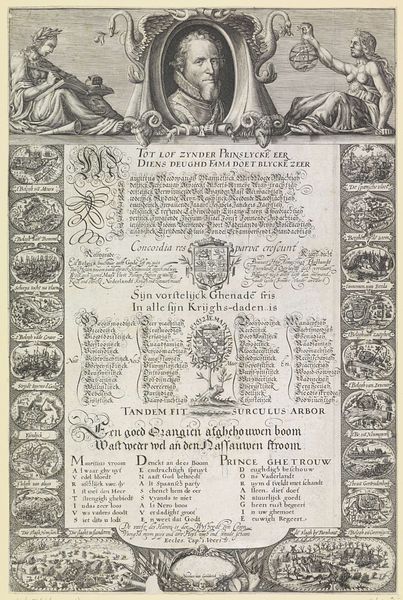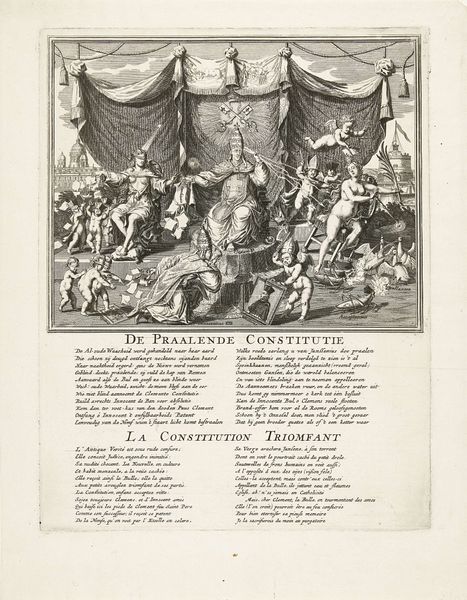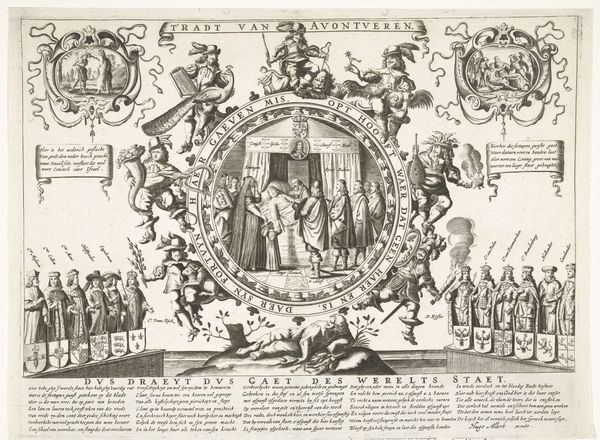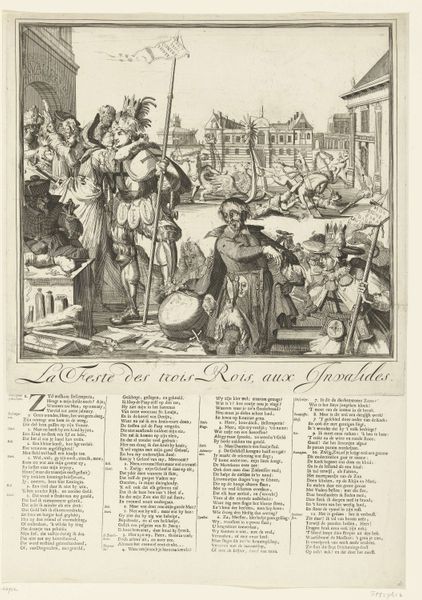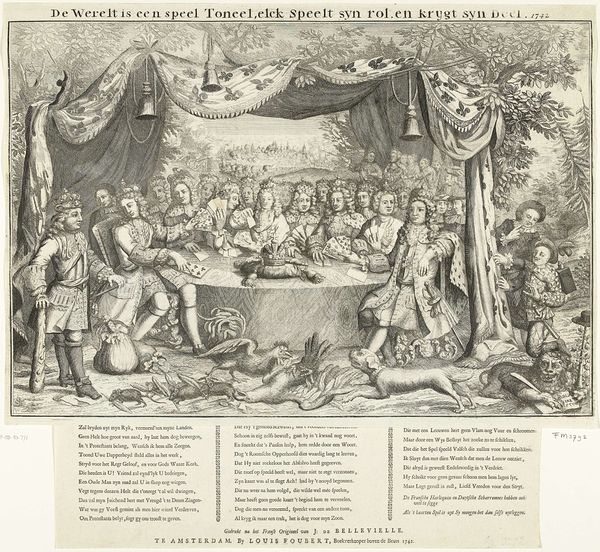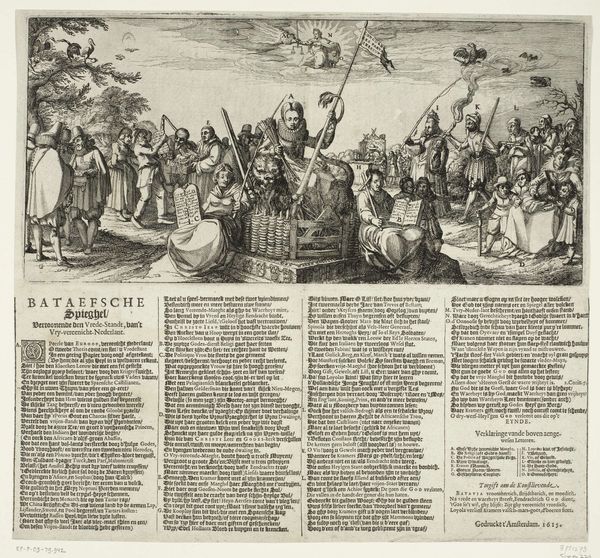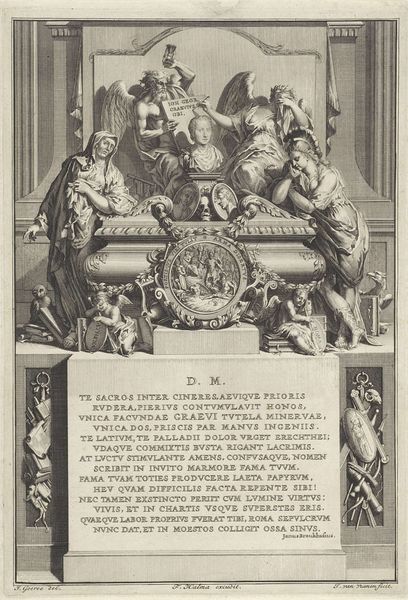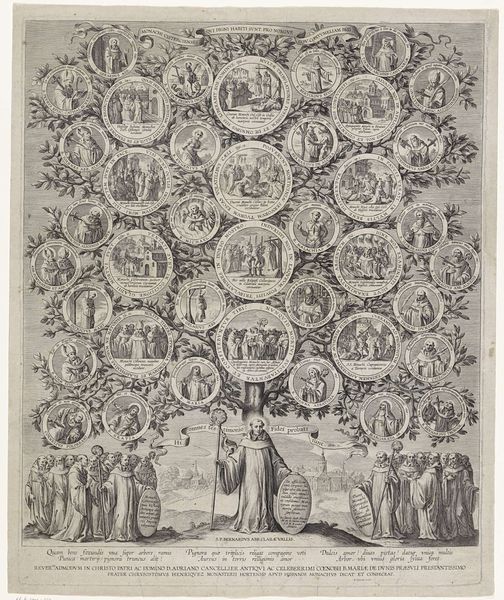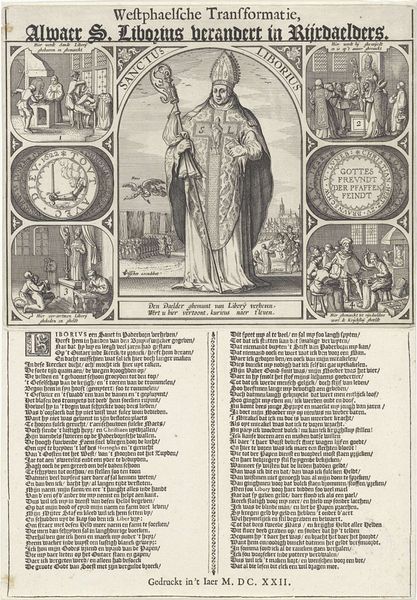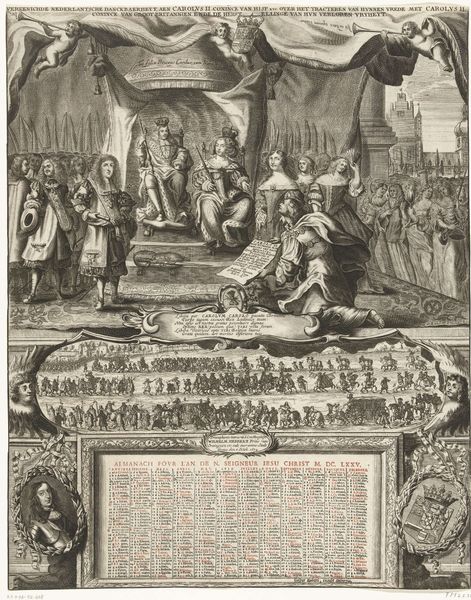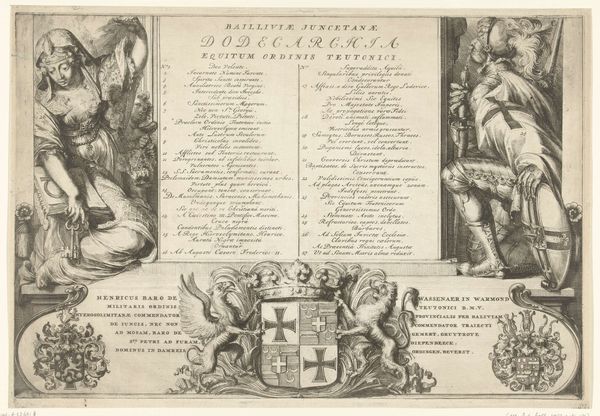
print, engraving
#
allegory
#
baroque
#
dutch-golden-age
# print
#
old engraving style
#
traditional media
#
history-painting
#
engraving
Dimensions: height 467 mm, width 368 mm
Copyright: Rijks Museum: Open Domain
This allegorical print, made in Amsterdam in 1651, commemorates the first assembly after the Frist Stadtholderless Period, a transformative moment in Dutch history. The print allegorically represents the seven provinces of the Dutch Republic, each embodied by a female figure. What does it mean to cast the provinces as women? The figures are gathered around an altar, where two helmeted figures are positioned, possibly representing the States General. The broken weapons on the floor may symbolize the end of conflict and the restoration of peace. The assembly is watched over by angels, suggesting divine approval of the union. The inscription on the print underscores the importance of unity, proclaiming that "In unity lies the greatest power." During this era, Dutch identity was deeply intertwined with notions of trade, religious tolerance, and civic duty, though these ideals often excluded women and marginalized groups. This image highlights the importance of harmony and the collective good, but we must ask, whose good was prioritized and whose voices were amplified? In reflecting on this print, we can appreciate the desire for concord while remaining attentive to the complexities of power and representation.
Comments
No comments
Be the first to comment and join the conversation on the ultimate creative platform.
